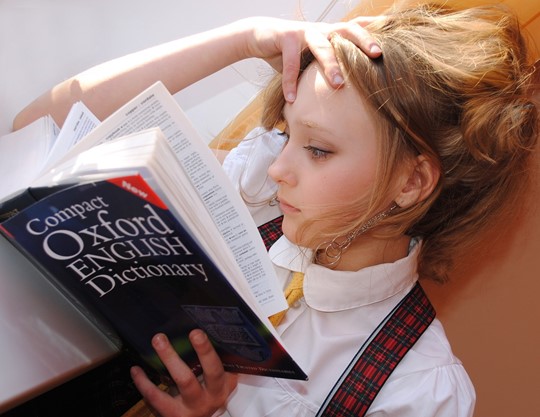Language Features Types and Techniques
Language features are the tools and techniques writers use to convey meaning and create a particular effect or impression on their audience. Language is essential because it is vital in expressing information, substances, and communication. It's necessary to effectively use its numerous vivid features or elements, such as response to the looming, topology, etc. Language features relate to the judgment structure, punctuation, nouns, phrases, vocabulary, and other content aspects that give proper communication meaning. Different language features are utilized or employed in connection or related to influence the debate while selecting the correct language features to explain the form and generate the information.

Example of Language feature
To successfully express content, information, linguistic elements, and language features such as figurative (representative) language, colloquial (casual) language, alliteration (analogue), metaphor (parable), simile(circumlocution), consonance, and others are utilized for communicating content and information effectively.
- Topological language: It's commonly found in runes, music, and other types or forms of art. It has nothing to do with the normal meanings that we transmit in our day-to-day lives. It adds to the intrigue of the content. Topological language includes things like metaphor, simile, oxymorons, and embroidery.
- Colloquial language: Relax, take a bite of the tablet, and as well as other words that are employed in communication are examples of Colloquial language.
- Dialogue: Communication among two or more persons is important in drama since it involves assertions and challenges.
- Alliteration: Alliteration occurs when the first letter of a word in a sentence is replicated and followed one by one in a sentence or a phrase.
List of Language features
Active listening assists in the effective and productive communication. This point of active listening is employed in training sessions, soothing (pacifying), forums, and other situations where receivers must quickly assimilate related information.
The adjective explains the rates of nouns utilized in the content. Ramneek is a good boy; for instance, good is the adjective of the noun in the statement, indicating that Ramneek is a good or a decent person by nature.
A quantitative point explains the volume of anything. It gives the subject a numerical value.
Interrogative points are employed or used while asking the questions like "How are you doing?"
Alliteration point is employed to repeat the first letter of a statement or a phrase in the following word as the first letter, like" lord's kiddies keep Remonstrating."
Simile point is employed or used to compare two effects, such as "as" useful "as" is used to compare two effects in nature are analogous or different
The term "Metaphor Point" is used to explain an object, person, or noun that has been exposed to something else.
Emotive language: is a type of language that is employed or used to express emotions. For example, emotional language is used to communicate passions when a person dies.
Language Techniques
Language ways aid in better scribbling down and comprehending an essay or story. Using methods assists in recruiting followers and concentrating them on crucial areas. There are a few examples of language features in various styles;
Allusion: Allusion is a style of relating to someone different. It gives only a little information about the person or an object. It believes the recipient knows and understands enough to connect to and comprehend the person in question.
Ambiguity strategy is utilized to create confusion since it does not avail clear details, instructions, and information to the recipient and instead gives two possibilities to select from.
The idiom techniques or methods involve using a group of words to convey significantly more information than a single word could. It is employed or used to improve the jotting quality.
Imaginary technique: is a decorative style of creative language that generates a mental picture of the content in the minds of an audience. It permits the receiver or customer to visualize, comprehend and connect to the data, rendering the transfer of knowledge more efficiently and productively.
How do writers choose which language features to use?
Purpose and Message: The writer's purpose or intention for their writing dramatically influences the choice of language features. For example, if the goal is to inform and educate, they may use clear and concise language focusing on facts and evidence. If the purpose is to entertain or evoke emotions, they might employ vivid descriptions, figurative language, and creative storytelling techniques.
Audience: Understanding the target audience is crucial in deciding which language features to use. Writers consider the readers' age, educational background, cultural context, and familiarity with the subject matter. Language features can be tailored to engage and resonate with the intended readership, using appropriate vocabulary, tone, and level of complexity.
Genre and Style: Different genres and writing styles have their conventions and expectations. Writers choose language features that align with the genre they are working in. For example, a formal academic essay may require a more scholarly tone and precise language, while a fictional narrative might allow for more descriptive and imaginative language.
Tone and Mood: The desired style and mood of the writing influence the choice of language features. Writers select words, sentence structures, and rhetorical devices that help create the intended atmosphere. For instance, they might use emotive language and sensory details to evoke a specific emotional response from the readers.
Stylistic Preferences: Each writer has their style and voice. They may prefer certain language features like alliteration, metaphors, or specific sentence structures. These choices can be influenced by the writer's artistic vision, creative instincts, or desire to experiment with different techniques.
Context and Cultural Factors: Writers also consider the broader context in which their work will be read. They consider cultural norms, societal values, and linguistic conventions relevant to their audience. This helps ensure effective communication and avoid misunderstandings or misinterpretations.
Ultimately, the selection of language features is a creative decision that requires writers to be mindful of their purpose, audience, and the specific nuances of the writing project. They carefully craft their language choices to effectively convey their ideas, engage readers, and achieve their desired impact.




